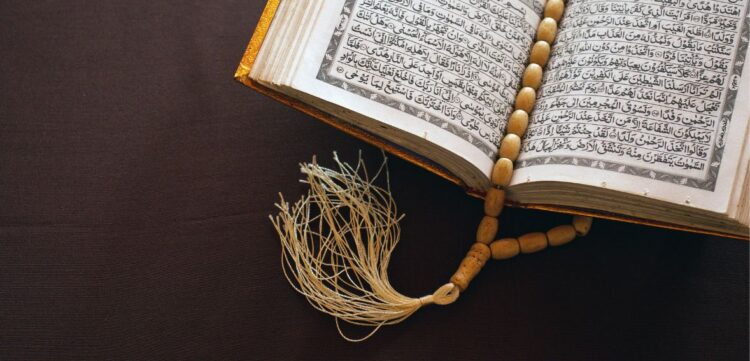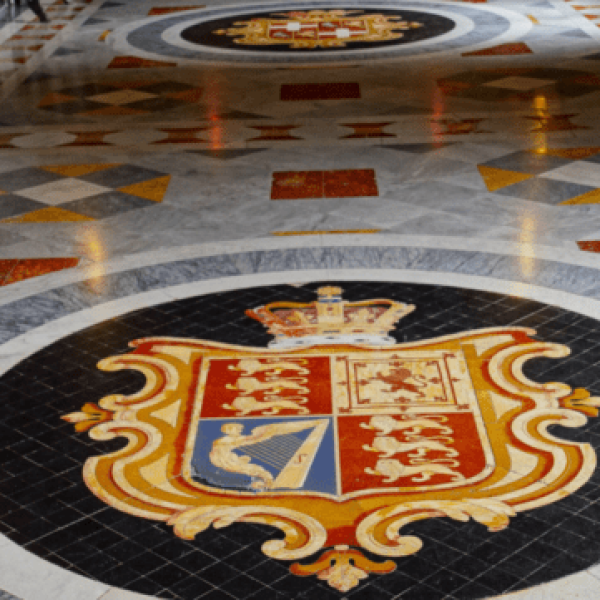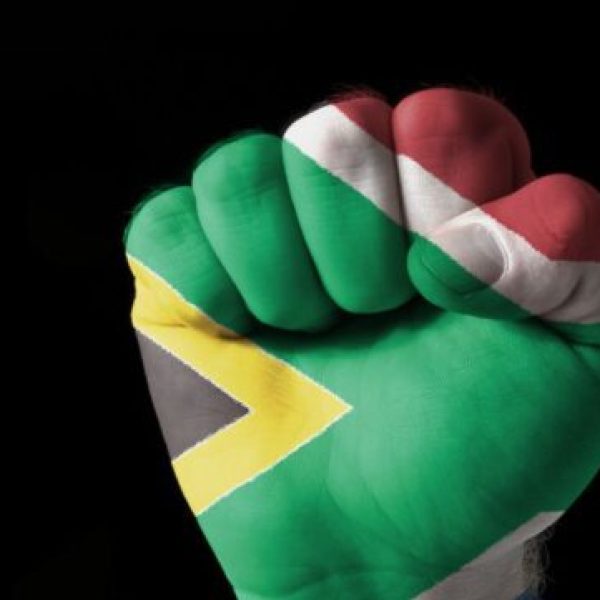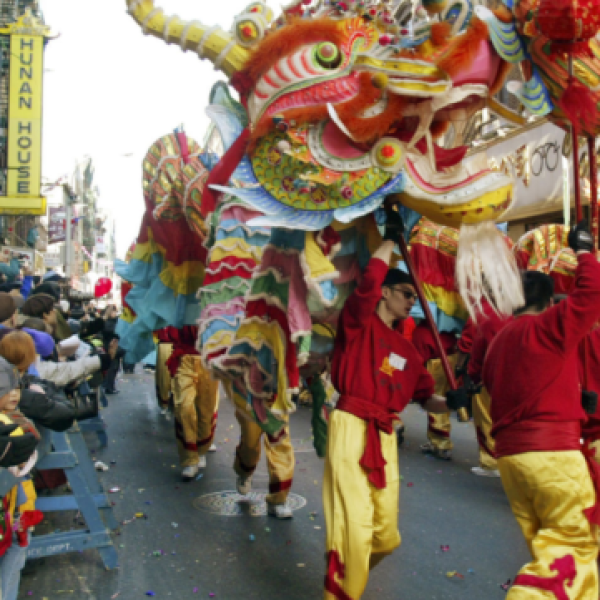Geomancy, an ancient and enigmatic art, offers a unique perspective on interacting with the world around us. Rooted in the belief that the Earth itself is a conduit of spiritual and cosmic energies, geomancy has been practiced for centuries across different cultures to decipher the subtle forces that influence our environments and lives.
This article delves into the rich tapestry of geomancy, exploring its historical origins, the methods by which practitioners interpret the Earth’s energies, and its modern applications.
By understanding the principles and techniques of geomancy, we can uncover the ways this time-honored practice provides insight, guidance, and a deeper connection to the natural world.
What is Geomancy
Geomancy, derived from the Greek roots geo- meaning “earth” and -mancy meaning “prophecy,” involves the interpretation of markings on the ground or the patterns formed by tossed handfuls of soil, rocks, or sand. The fundamental premise of geomancy is that by reading these patterns, practitioners can gain insight into the underlying energies of the Earth, making it possible to predict future events or make decisions aligned with cosmic forces.
History and Origins of Geomancy
The practice of geomancy can be traced back to the classical civilization of sub-Saharan Africa, spreading through Arab traders to Europe and Asia. It was notably practiced by Islamic scholars in the medieval period who refined and formalized its methods, integrating it into the broader corpus of medieval magic and divination. Geomancy was revered as a scholarly art, often aligned with astrology to provide comprehensive analyses of temporal and spiritual questions.
Geomancy and Earth Energies
Geomancy, an ancient form of divination and Earth science, is rooted in the philosophy that the Earth is a dynamic, living organism imbued with a complex network of energies. These energies, often visualized as lines or pathways similar to the veins of a body, traverse the planet’s surface, creating a tapestry of invisible forces that influence the natural and human-made environments.
Understanding Earth Energies
The concept of Earth energies in geomancy posits that the planet possesses a vital life force known as “Qi” in Chinese traditions or “Prana” in Indian beliefs. These energies are thought to flow along specific pathways, sometimes referred to as ley lines or dragon lines. These pathways are often aligned with natural landscape features such as ridges, streams, and valleys, and are believed to converge at places of power, such as ancient monuments, natural springs, and mountain peaks.
Geomancers study the patterns and flow of these energies to determine the most auspicious locations for building, farming, or even for spiritual purposes. By tapping into these energies, geomancers aim to harmonize human activities with the natural rhythms of the Earth, enhancing wellbeing, prosperity, and spiritual balance.
Techniques in Geomancy
Geomantic practice involves several techniques to detect and interpret the Earth’s energies:
- Dowsing: This is perhaps the most well-known technique, typically involving a rod or pendulum to locate water, minerals, or Earth energy lines.
- Observation: Careful study of the land, noting the shapes of the terrain, the types of vegetation, and the behavior of wildlife, which can all suggest the flow of energies.
- Intuitive Mapping: Some practitioners use a more intuitive approach, sensing energy directly or through visions and then mapping these insights onto physical locations.
Application and Modern Relevance
In contemporary times, geomancy has found relevance in various fields:
- Ecological Building Design: Architects and planners use geomantic principles to create spaces that are in harmony with the natural energies of the land, enhancing the health and happiness of inhabitants.
- Agriculture: Farmers may use geomantic insights to optimize the placement and rotation of crops based on the subtle energies of the land.
- Personal and Spiritual Development: Individuals may use geomantic practices to enhance personal energy, improve health, and deepen spiritual connections to the Earth.
Geomancy, thus, serves as a bridge between the tangible world and the subtle energies that animate it, offering a holistic approach to interacting with our environment. By aligning human endeavors with the Earth’s energies, geomancy not only facilitates a deeper understanding of the natural world but also fosters a more sustainable and balanced way of living.
Cultural Significance and Variations
Geomancy, a method of divination that interprets markings on the ground or patterns formed by tossed handfuls of soil, rocks, or sand, has been adapted and integrated into various cultures around the world, each imbuing it with local significance and practices.
Geomancy in Chinese Culture: Feng Shui
In China, geomancy is synonymous with Feng Shui, literally translating to “wind and water.” This practice is deeply rooted in Daoist traditions and focuses on arranging the human-made environment to harmonize with the natural world, thereby promoting the flow of “Qi” or vital energy.
Feng Shui operates under the principle that the land is alive and filled with energy. Its practice involves the use of various tools and symbols, such as the Ba Gua (an octagonal grid containing the symbols of the I Ching), to analyze the environment. This analysis influences decisions regarding the placement and orientation of buildings, the arrangement of spaces within homes and offices, and the selection of property.
The goal is to align these elements in a manner that enhances well-being and prosperity. The practice of Feng Shui demonstrates the adaptability of geomancy as it melds cosmic forces and practical considerations, making it a vital part of Chinese architectural planning and interior design.
Geomancy in European Culture: The Renaissance Revival
During the Renaissance in Europe, geomancy was considered a scholarly art. It found its place alongside astrology, alchemy, and other occult sciences within the intellectual circles of the time. European geomancy involved generating a series of sixteen figures (consisting of single or paired dots) through a randomized process that might include throwing dice, drawing dots on paper, or spreading soil or sand.
These figures were then interpreted according to a set of traditional rules, which were often integrated with astrological theory, thus bridging the gap between earthly and celestial influences. For example, each geomantic figure was associated with a particular planetary influence and zodiac sign, which guided divinatory readings and decisions.
The practice was notably systemized in the works of figures like Cornelius Agrippa and John Dee, who sought to unlock the secrets of the universe through a synthesis of geomantic data and astrological calculations. This period highlighted the adaptability of geomancy to fit the European penchant for systematization and detailed scholarly study.
The Universal Appeal and Adaptation of Geomancy
The cultural variations of geomancy, from the Feng Shui practices in China to the astrological integrations in Renaissance Europe, illustrate its universal appeal and adaptability. In each context, geomancy was more than just a method of divination; it was a way to make sense of the world, align with cosmic forces, and enhance daily life. By adapting to local customs and spiritual beliefs, geomancy became a globally practiced art, reflecting the diversity of its practitioners and their environments.
The versatility and widespread appeal of geomancy, evident in its adaptation across cultures, underscore its significance not just as a divinatory tool but as a profound means of connecting with the spiritual and material realms. This adaptability ensures that geomancy remains relevant in various forms, as seen in the enduring practice of Feng Shui and the historical fascination with geomantic studies in Europe. Understanding Geomancy Symbols and Meanings within these cultural contexts enriches our appreciation of how ancient practices can influence modern life and spiritual practices.
Geomancy as a Tool for Location Analysis
In modern times, geomancy is often employed for choosing locations for homes, businesses, and even for agricultural purposes. This practice involves assessing the energies of a place to determine its suitability for particular activities or the well-being of its inhabitants. By analyzing geomantic symbols and interpreting earthly and celestial cues, geomancers advise on the most auspicious locations and layouts.
Geomancy Symbols and Meanings
Geomancy, an ancient form of divination, employs a unique set of symbols known as geomantic figures to interpret the energies and potential outcomes of specific inquiries. These figures serve as the fundamental language through which geomancers discern the flow and balance of natural forces.
Each geomantic figure is composed of four horizontal rows, with each row containing either one or two points. These rows represent different elements: the top row symbolizes fire, the second air, the third water, and the bottom earth. The configuration of points in each row determines the overall meaning and influence of the figure.
There are sixteen primary geomantic figures, each with its own distinct name and associated meanings. The figures are traditionally arranged in pairs, reflecting their complementary or opposing forces. Some of the most notable figures include:
1. Via (The Way) – Made up entirely of two-point rows, symbolizing fullness and movement. It is associated with the moon and suggests a smooth path forward.
2. Cauda Draconis (Tail of the Dragon) – Consists of one point in the top three rows and two points in the bottom row. This figure often indicates endings or conclusions, with its elemental alignment pointing towards transformative outcomes.
3. Puer (The Boy) – Characterized by a single point in the top row followed by three rows of two points. This figure embodies youthful energy, aggression, and the potential for conflict. It’s linked to the planet Mars.
4. Fortuna Major (Greater Fortune) – Features two points in the top and bottom rows with one point in the middle rows. This favorable figure suggests success and divine favor, particularly in matters where luck plays a significant role.
The process of geomancy typically begins with the geomancer casting these figures, often through random generation methods like tossing coins, drawing lines in sand, or rolling dice. The figures are then arranged into a shield chart—a structured layout that maps the query’s various aspects and potential outcomes.
Interpretation involves analyzing the figures’ elemental compositions, their positions in the chart, and how they interact with each other. For example, a figure dominated by points symbolizing fire or air might suggest rapid change or intellectual pursuits, whereas figures with earth or water points might indicate stability or emotional considerations.
The study of Geomancy Symbols and Meanings provides not only insights into specific queries but also a deeper understanding of the natural balance and discord among the elemental forces at play, reflecting the ancient belief in the interconnectedness of all things. This intricate system of divination offers a unique window into the unseen influences shaping our world and our decisions within it.
Connecting with Earth’s Energies for Personal Guidance
Geomancy serves as more than just a method of divination; it’s a spiritual practice that helps individuals connect with Earth’s energies for personal and spiritual growth. By interpreting geomantic figures, practitioners align their lives with nature’s rhythms and cosmic forces, gaining insights that foster harmony in both personal and professional realms.
The practice begins with casting geomantic figures to answer personal queries, thereby tuning into the natural world’s guidance. Each figure correlates with specific elemental energies—earth, air, fire, water—which represent different life aspects. This connection encourages a mindful interaction with the environment, promoting a balanced lifestyle.
Geomancy also acts as a reflective tool, mirroring internal states through external symbols, and aids practitioners in understanding their deeper selves and life directions. Engaging with Geomancy Symbols and Meanings not only offers practical guidance but also connects individuals to the ancient wisdom of harmonizing with the Earth’s natural order, enriching both their personal journey and spiritual path.
Conclusion
Geomancy bridges the spiritual and the physical, offering insights that encourage harmony with the Earth’s energies. As we explore this ancient art, we gain tools for enhancing our environments and personal well-being. In today’s fast-paced world, geomancy remains relevant, guiding us to reconnect with nature and balance our lives.
By integrating geomantic principles, we can cultivate sustainable and fulfilling interactions with the world, honoring the wisdom that our planet is a profound source of guidance and healing.
Frequently Asked Questions
Can geomancy influence architecture and planning?
Yes, architects and urban planners use geomantic principles to design spaces that align with Earth’s energies, aiming to enhance well-being and promote environmental harmony in built environments.
How does geomancy relate to modern life?
Modern applications of geomancy include ecological building design, optimizing agricultural practices, and personal spiritual growth, helping individuals and communities harmonize with Earth’s natural energies.
What are geomantic figures and how are they used?
Geomantic figures are symbols consisting of four rows of dots that represent elemental energies. These symbols are interpreted to provide insights into various aspects of life and decision-making processes.
What is the significance of ley lines in geomancy?
In geomancy, ley lines are believed to be pathways of Earth’s energies that influence the natural and built environment. Identifying and respecting these lines can enhance the energy flow and balance in various settings.
What is geomancy?
Geomancy is a form of divination that interprets patterns formed by soil, rocks, or sand to predict future events and understand Earth’s energies, offering insights into our environment and decisions.













